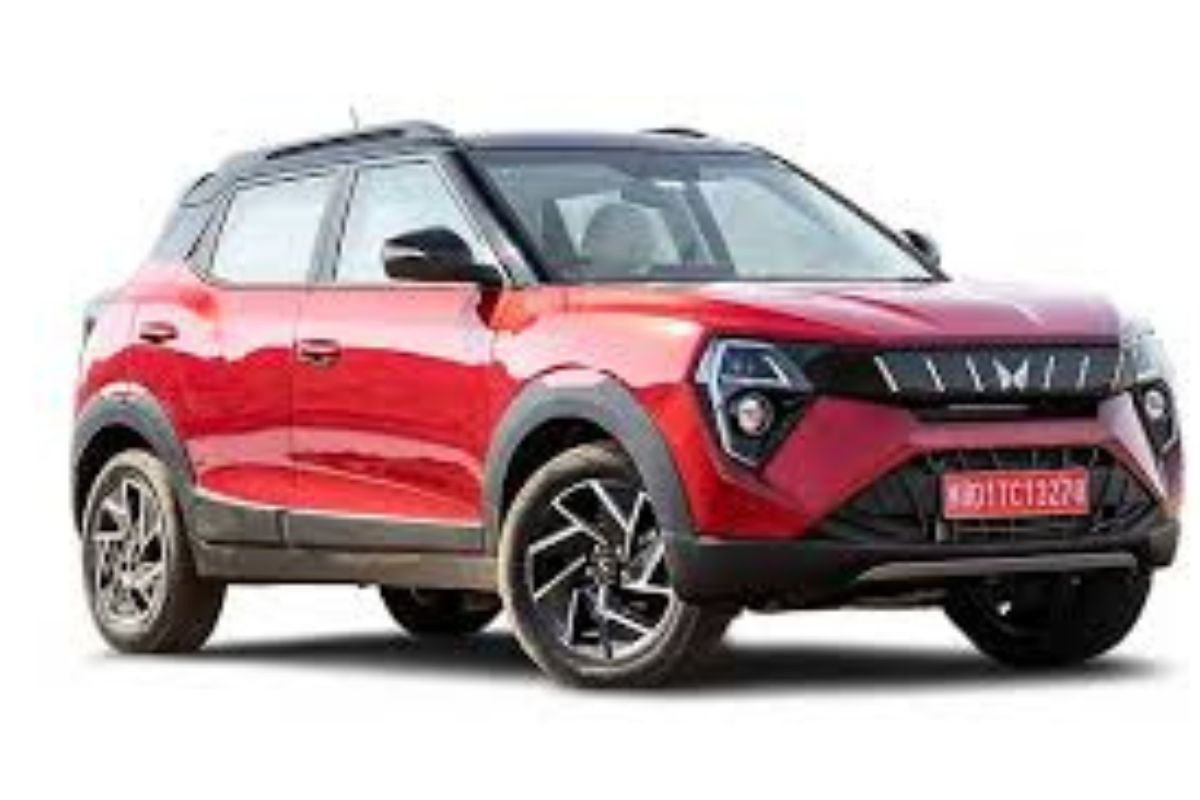Mahindra’s Festive Onslaught: A New Era for Three Icons
The Indian automotive market holds its breath for the festive season, a period when consumer sentiment peaks and sales charts are rewritten. In October 2025, Mahindra & Mahindra has chosen this very stage not for a single product launch, but for a coordinated strategic offensive. In a remarkable display of market confidence, the company unleashed a trio of updated icons: the highly anticipated 2025 Thar facelift on October 3, followed swiftly by the refreshed 2025 Bolero and Bolero Neo facelifts on October 6. This is far more than a simple product refresh; it is a calculated power play designed to saturate the market and solidify Mahindra’s dominance in the sport utility vehicle (SUV) segment.
This aggressive timing is no coincidence. The festive season in India is a critical sales window, and by launching three of its most recognizable nameplates in quick succession, Mahindra has effectively dominated the news cycle. This move serves to reinforce the company’s recent and remarkable ascent to becoming India’s second-largest carmaker, a position built squarely on the back of its SUV-first strategy. The numbers already tell a compelling story; in September 2025 alone, Mahindra sold 56,233 utility vehicles in the domestic market, marking a 10% year-on-year growth and demonstrating robust demand even before these new models hit the showrooms. The Navratri festival period saw an even more dramatic surge, with SUV retails growing over 60% compared to the previous year, highlighting the immense potential these launches aim to capture.
The strategy is a three-pronged assault, with each vehicle playing a distinct and vital role. The 2025 Thar continues its reign as the aspirational lifestyle icon, now more refined for urban life. The classic 2025 Bolero doubles down on its identity as the unbreakable workhorse of the Indian heartland. And the 2025 Bolero Neo evolves as the crucial bridge, offering rugged capability with a modern touch for the semi-urban family. By deploying three distinct, high-volume models simultaneously, Mahindra is not just competing; it is setting the agenda, forcing rivals to contend with a multi-front challenge across different price points and consumer demographics. It is a bold declaration of intent from a manufacturer at the peak of its powers.
The Modern Legend: Deconstructing the 2025 Mahindra Thar Facelift
When the second-generation Thar launched in 2020, it was a seismic event, transforming a niche off-roader into a mainstream cultural phenomenon. However, its success came with a list of owner-reported compromises. The 2025 facelift is Mahindra’s direct and decisive answer to that feedback. It’s an exercise in refinement, addressing the practical pain points of daily driving without diluting the raw, adventurous spirit that defines the Thar.
From Rugged to Refined: Exterior Evolution
At first glance, the 2025 Thar’s silhouette remains unmistakably iconic, but the details reveal a deliberate shift towards a more premium aesthetic. The most prominent change is the new front grille, which is now body-coloured instead of the previous matte black, giving the SUV a more modern and integrated look. This is complemented by a revised dual-tone front bumper featuring new silver inserts, adding a touch of sophistication to its rugged face.
Mahindra has also refreshed the colour palette, introducing two new contemporary shades: a vibrant Tango Red and a stoic Battleship Grey. More importantly, the exterior updates bring crucial functional improvements. Addressing a significant omission from the previous model, the 2025 Thar now comes equipped with a rear wiper and washer, along with a neatly integrated rear-view camera housed within the spare wheel hub—two features that dramatically improve practicality and safety in everyday use.
A Focus on Livability
The most transformative changes to the 2025 Thar are found inside the cabin. Here, Mahindra has orchestrated a revolution in comfort, convenience, and technology, effectively elevating the vehicle’s daily usability.
The centerpiece of this overhaul is the new 10.25-inch HD touchscreen infotainment system, a component borrowed directly from the larger Thar Roxx. This crisp, modern unit replaces the dated 7-inch screen and brings the Thar’s cabin into the modern era. It supports wired Apple CarPlay and Android Auto and features the enhanced “Adventure Stats Gen II,” an off-road telemetry suite that displays vital data like pitch and roll angles, an altimeter, and steering direction, adding a layer of engagement for enthusiasts.
Beyond the screen, Mahindra has systematically addressed long-standing ergonomic complaints. The power window switches have been moved from the center console to their rightful place on the door panels. An internally operated remote fuel lid opener replaces the previous key-operated cap, a much-requested security and convenience feature. For easier ingress and egress, A-pillar mounted grab handles are now standard, and automatic variants finally receive a dead pedal for driver comfort.
Comfort has also been significantly enhanced. The addition of rear AC vents ensures better climate control for occasional passengers, while a new sliding front center armrest with built-in storage provides much-needed support and practicality on longer journeys. The new steering wheel, also shared with the XUV700 and Thar Roxx, further elevates the cabin’s tactile quality and premium feel.
The Heart of the Beast
Under the hood, Mahindra has wisely chosen not to alter a winning formula. The 2025 Thar continues to be offered with its trio of robust and well-regarded engine options. These include:
- The 2.0-litre mStallion turbo-petrol engine, producing 152 hp and up to 320 Nm of torque.
- The 2.2-litre mHawk turbo-diesel engine, delivering 132 hp and 300 Nm of torque.
- The 1.5-litre D117 CRDe diesel engine (for Rear-Wheel Drive variants), producing 119 hp and 300 Nm of torque.
These engines are paired with either a 6-speed manual or a 6-speed torque converter automatic transmission, providing a wide range of choices for different driving preferences and use cases. The decision to retain these powertrains ensures that the Thar’s reputation for strong performance and reliability remains intact.
Strategic Pricing
Mahindra’s pricing strategy is equally astute. The entry-level AXT RWD variant is now priced at ₹9.99 lakh (ex-showroom), which is ₹32,000 lower than the outgoing model’s starting price. Conversely, the top-end LXT 4WD AT diesel is priced at ₹16.99 lakh, an increase of ₹38,000. This dual approach makes the Thar brand more accessible at the entry point while capturing higher margins from buyers who demand a fully-loaded experience.
The upgrades for the 2025 Thar facelift are not merely a mid-cycle refresh; they are the result of a clever intra-brand development strategy. The premium, family-focused 5-door Thar Roxx served as a real-world testbed for solving the ergonomic and feature deficits of the original 2nd-gen Thar. Key upgrades like the 10.25-inch screen, new steering wheel, rear AC vents, and armrest are components directly shared with the Roxx. This “feedback loop” allowed Mahindra to leverage the R&D and economies of scale from the Roxx program to significantly enhance the 3-door model in a highly cost-effective manner, demonstrating an efficient and responsive product development ecosystem within the larger “Thar” sub-brand.
The Unbreakable Legacy, Reimagined: The 2025 Bolero & Bolero Neo Facelifts
For over two decades, the Bolero nameplate has been synonymous with ruggedness and reliability in India. With its 2025 update, Mahindra has executed a masterful strategy, refreshing not one, but two distinct versions of its iconic SUV. The launch of the facelifted classic Bolero and the modern Bolero Neo on October 6 is a clear demonstration of a dual-pronged approach: one that honors a storied legacy while simultaneously embracing the future of the compact SUV segment. This is the tale of two Boleros, each reimagined for its own loyal following.
The King of the Heartland: 2025 Bolero Facelift
The classic Bolero is more than a vehicle; it’s a cornerstone of the rural and semi-urban Indian landscape. Recognizing this, Mahindra has approached its facelift with a philosophy of “evolution, not revolution”. The updates are intentionally conservative, designed to modernize the SUV without alienating the core customer base that values its simplicity and toughness above all else.
The iconic, unapologetically boxy silhouette remains, as does the utilitarian metal bumper that has become a signature of its go-anywhere capability. The key exterior changes include a mildly redesigned front grille now featuring Mahindra’s contemporary “Twin Peaks” logo and, for the first time, the option of a new black exterior finish.
Inside, the changes are functional. The most significant upgrade is the inclusion of a new, basic touchscreen infotainment system that supports Bluetooth connectivity, a nod to modern needs without overcomplicating the cabin. The vehicle retains its highly practical three-row layout with side-facing jump seats in the rear. Under the hood, the Bolero continues with its trusted workhorse: the 1.5-litre mHawk75 diesel engine, producing 75 bhp and 210 Nm of torque, paired with a 5-speed manual gearbox. This powertrain is celebrated for its reliability, low maintenance costs, and ample low-end torque, making it perfectly suited for challenging terrains and heavy loads.
The Stories Behind the Steel: The Enduring Legacies of Bolero and Thar
To truly understand Mahindra & Mahindra, one must look beyond the spec sheets and sales figures of its latest models. The company’s dominance is built on vehicles that have become more than just transportation; they are woven into the very fabric of Indian life. The Bolero and the Thar are not merely products; they are legends, each with a unique story that explains their unbreakable bond with the Indian consumer.
The Bolero Saga: India’s Unbreakable Workhorse
The story of the Bolero began on August 4, 2000, when it was launched as a more stylish and capable replacement for the Mahindra Armada Grand. Powered initially by a 2.5-litre Peugeot diesel engine, it quickly defined the SUV concept for a generation of Indians. However, its true legacy was forged not on city streets, but on the broken and unpaved roads of rural and semi-urban India.
Here, the Bolero became less of a car and more of an essential tool—a lifeline. Its success is rooted in a simple, uncompromising formula: a rugged body-on-frame chassis, a high-load-capacity leaf spring rear suspension, and a reliable, torquey diesel engine with simple mechanicals that could be fixed by any roadside mechanic. For countless families, farmers, and small business owners, the Bolero was the vehicle that could handle any terrain, carry a full load of people or produce, and do so with unparalleled reliability and a low cost of ownership. It became a symbol of empowerment, enabling connectivity and commerce in the farthest corners of the country.
Over the years, Mahindra astutely evolved the Bolero to meet changing needs without sacrificing its core identity. Key milestones like the introduction of fuel-saving Micro-Hybrid technology in 2008, a more powerful CRDe engine in 2009, and the tax-friendly sub-4-meter Power Plus variant in 2016 kept the model relevant. The result is a production run of over 25 years and more than 1.4 million units sold, a testament to its enduring appeal and its status as a true national workhorse.
Mahindra’s Masterplan: How an SUV-First Strategy Conquered India
Mahindra & Mahindra’s recent surge to become the nation’s second-largest carmaker is no accident. It is the culmination of a focused, long-term strategy that perfectly anticipated and capitalized on the most significant shift in Indian consumer preference in a generation: the meteoric rise of the SUV. While other manufacturers were still betting on small cars, Mahindra stayed true to its heritage, and in doing so, positioned itself perfectly for the future.
The Great Indian Shift to SUVs
A decade ago, the Indian car market was dominated by hatchbacks and sedans, with SUVs considered a niche segment, accounting for just 21% of passenger vehicle sales. Today, that landscape has been completely redrawn. In FY25, SUVs and MPVs accounted for a staggering 65% of the 4.3 million cars dispatched in India. This monumental shift is driven by a desire for vehicles with a stronger road presence, perceived higher safety, and the ability to handle India’s varied road conditions aspirations that the SUV perfectly embodies.
Right Place, Right Time, Right Products
Mahindra, with its decades-long history of building rugged utility vehicles and tractors, was uniquely positioned to ride this wave. While competitors, whose portfolios were heavily skewed towards small cars, scrambled to develop compact SUVs that often felt like raised hatchbacks, Mahindra already possessed deep expertise, brand credibility, and the manufacturing DNA for authentic SUVs.
Execution is Key
A brilliant strategy is only as good as its execution. In recent years, Mahindra has demonstrated a renewed focus on operational excellence. The company faced significant criticism for long waiting periods on blockbuster models like the XUV700, which stretched to nearly two years at their peak. Such delays risked losing customers to competitors. In response, Mahindra aggressively ramped up its production capacity and implemented lean manufacturing principles like ‘Single Piece Flow’ to boost efficiency and reduce waste. This concerted effort successfully slashed waiting times for high-demand models to a matter of months, proving that Mahindra could not only design winning products but also deliver them effectively. This combination of strategic foresight, a robust product portfolio, and disciplined execution is the core of Mahindra’s masterplan that has propelled it to the top of the Indian auto industry.
The Road Ahead for Mahindra
The flurry of launches in October 2025 is not a culmination but a powerful continuation of Mahindra & Mahindra’s strategic journey. It is a masterclass in understanding brand equity, respecting legacy, and decisively catering to modern market demands. By thoughtfully refining its most iconic models—the Thar, Bolero, and Bolero Neo Mahindra has reinforced its core strengths while simultaneously broadening its appeal. The company has demonstrated an ability to listen to its customers, addressing the ergonomic flaws of the Thar, and to manage its brand portfolio with sophistication, evolving the Bolero on two parallel tracks to serve both its traditional and emerging customer bases. This calculated assault on the festive season solidifies Mahindra’s position as the undisputed leader in India’s SUV space. The strategy is clear: leverage a deep understanding of the Indian consumer, from the adventurous urbanite to the pragmatic rural family, and back it up with a diverse portfolio of authentic, capable vehicles. The road ahead looks equally ambitious. The company is already deep in development for the next-generation Bolero, which is expected to debut in 2026 on the advanced new NFA (New Flexible Architecture) platform. Spy shots and industry reports suggest that future models could incorporate features once unthinkable for these nameplates, such as an Advanced Driver Assistance Systems (ADAS) suite and even a panoramic sunroof, signaling Mahindra’s intent to continue pushing its legacy brands into new territory. Ultimately, Mahindra’s success story is a reflection of its deep connection to the story of modern India. It is a company that builds vehicles not just for the country’s roads, but for its diverse people from the rugged, unyielding heartland to the ambitious, adventurous urban soul. The road ahead promises more innovation, but it will undoubtedly be built on the unshakeable foundation of these enduring icons.




Loved how you broke things down.馃憤 The tips are actionable and clear.!
Really needed to hear this message today